The American mastiff is a very large-sized, purebred working dog of US origin.
This breed is one of the biggest dog breeds in the world. Both females and males tend to weigh more than the average adult human.
Despite their immense size, these dogs are gentle and never get too crazy or hyper. They are loving dogs that protect their owners and other family members. These dogs are happy to just be near a family member whenever they can.
American mastiffs typically cost $1,000 to$1,500 USD.
TABLE OF CONTENTS
What is an American Mastiff?
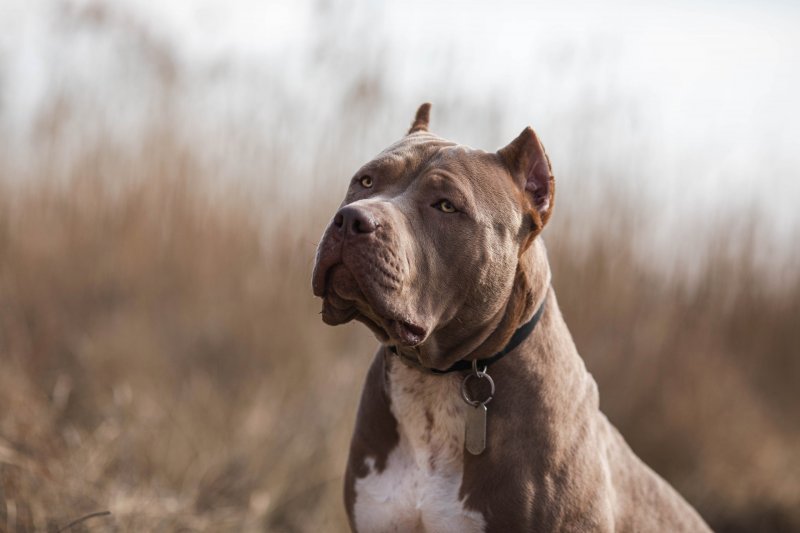
From Adobe Stock
If you are interested in owning a gentle giant of a dog, the American Mastiff is a great choice. This is a large, imposing-looking breed, but is rarely aggressive. However, they need lots of socialization to combat their natural wariness of strangers.
Different breeds of mastiffs were originally bred to help armies in battle. There is evidence these giant canines were raised in Rome, China, Tibet, Greece, and Egypt, and in ancient times were bred and trained to be aggressive and ferocious. Some of the Mastiff breeds, such as the Neapolitan Mastiff and the Tibetan Mastiff, have maintained the same physical and personality traits for centuries.
The American Mastiff is a relatively new breed. Its roots are in Piketon, Ohio, where the first American Mastiff litters were born. Fredericka Wagner, the owner of the Fly W Farms kennel, mated an English Mastiff with an Anatolian Mastiff to create what she believed was an improvement on other Mastiff breeds.
The Anatolian Mastiff, also known as the Anatolian Shepherd or the Turkish Mastiff, is a guard and herding dog that has been around since ancient times. They are extremely protective, but can also be dominating and demanding.
After World War II ended, American ranchers began importing Anatolian Mastiffs from Turkey to work on sheep farms. Wolves were constantly killing sheep, but laws protected wolves as an endangered species, and farmers were forbidden from killing these predators. The Anatolian Mastiffs were perfect guard dogs for the sheep farmers because they protected the sheep without actually harming the wolves.
In 55 BC, Julius Caesar invaded Britain and took home with him to Rome a number of dogs that impressed him greatly with their noble efforts to help defend the British Isles. The Romans used the British Mastiffs for entertainment, putting them in arenas to battle human gladiators and wild animals.
In Medieval England, the British Mastiffs were used as war dogs, big-game hunters, and guard dogs for large estates. In the 1500s, in England Mastiffs were pitted against bears in a cruel and gruesome spectator sport called “Bear Baiting.” Clergymen and politicians began to speak out against the sport of pitting dogs against bears and other animals, and in 1835, the British Parliament outlawed all forms of animal baiting. After that, dog lovers continued to breed and raise mastiffs, but the focus moved towards breeding dogs that were good family pets.
When Europe was ravaged by two world wars, many dog breeds declined in numbers and some nearly became extinct. It is estimated that at the end of World War II there were only 14 British Mastiffs left in all of England. Fortunately, breeders in America reached out to help, sending puppies from their own litters back to Great Britain to replenish the Mastiff population.
Back to Fredericka Wagner – she established her farm in Ohio in 1975 and worked on creating the American Mastiff for many years until she got the result she wanted. “The goal was to develop a dog that had the size, temperament, disposition, and the appearance of the Mastiff, but with fewer health problems, and much dryer mouth than other mastiff breeds.” [Quote from the Flying W Farms Kennels website]. The American Mastiff has a tighter, firmer lower lip than other Mastiff breeds, meaning it drools less than other Mastiffs. In addition, the American Mastiff has none of the violent characteristics of his warrior ancestors.
By the 1990s, Mrs. Wagner stopped cross-breeding, and after getting her new breed registered with the Continental Kennel Club in 2000 she established the American Mastiff Breeders Council in 2002. The purpose of the AMBC is to monitor and control who breeds this dog and make sure standards are strictly adhered to.
Appearance
American Mastiffs have broad, enormous heads and rectangular bodies. Their foreheads are wrinkled, giving them an expression similar to that of a kindly old man. The first impression one gets from this breed is that it is an aristocratic, dignified animal. American Mastiffs have heavy bones and well-developed muscles. Its brown eyes are set wide apart and are medium-sized. Its ears are small in relation to the size of the skull.
The ears and muzzle are very dark black and give this breed the appearance of wearing a mask. When not pricked up at attention, the American Mastiff’s ears rest close to the cheeks. The American Mastiff has powerful jaws and large teeth that meet in a scissors bite. No teeth should be showing when this dog closes its mouth.
The American Mastiff has a neck like a bodybuilder, thick near the skull, and getting even wider as it nears the shoulders. This breed has a barrel chest, a straight back, a tail held upright in a slight curve, and large feet with arched toes. The powerful legs are parallel to one another when the dog is in motion.
American Mastiff Weight and Size
American Mastiffs are large dogs that need living spaces big enough for them to pass through rooms without knocking over everything in their path. Full-grown Mastiffs stand at a height of 28 – 36 inches (65 – 91 cm). Females weigh between 140 and 180 pounds (63 – 81 kg), and males are even heavier, at 160 to 200 pounds (72 – 90 kg). Keep in mind that your little American Mastiff puppy home will need a special place to sleep when it is fully grown. This isn’t a little lap dog that can just take a nap on any chair or bed in the house.
Any dog needs room to stretch out, and there should be at least six inches of open space around a dog when it is lying down. Your American Mastiff will need a bed that is at least 50 inches in diameter if it’s round, and 50 inches long and wide if it’s square. American Mastiffs are much heavier than other dogs, so they need beds with extra support to protect their joints from hours of contact with a hard floor. Either buy an orthopedic dog bed for your American Mastiff or make one using a twin size mattress intended for humans. Put a washable cover on whatever your American Mastiff sleeps on. He will be extremely thankful for a comfortable sleeping space.
Also, keep in mind that a dog this size will take up a whole seat in the car. If you want to take your dog along for a trip in the car, and you have a five-seater vehicle, along with yourself and your dog you will only be able to invite three more riders…
Common Colors
American Mastiffs can be fawn, apricot, white, or brindle. The puppies are dark-colored when they are born, and get lighter as they grow older. By age one, they have usually achieved their permanent color. American Mastiffs sometimes have white patches on their chest, feet, chin, or nose. The brindle dogs must have apricot or fawn backgrounds covered with dark stripes.
Coat
Even though the American Mastiff has a double coat, this is not a breed that tolerates extreme heat or cold. Its undercoat is short, dense, and lies close to the skin. Its outercoat is straight and coarse, and fairly short. The American Mastiff should never have any fringes on its legs, stomach, or tail.
Personality and Temperament
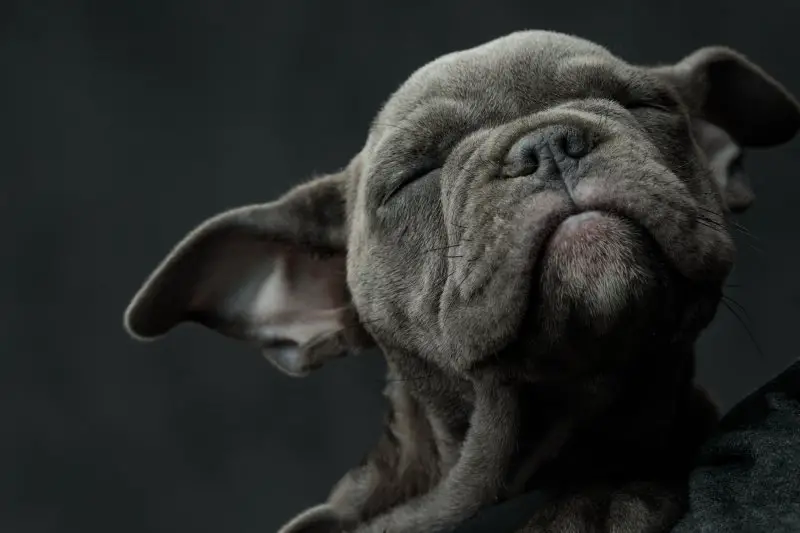
From Adobe Stock
If the American Mastiff was a human being, it would make a wonderful spouse. This breed is very loving, patient, and gentle. It is also intelligent, courageous, and a natural leader and protector. American Mastiffs are playful, but in a low key, calm way. This isn’t a breed that gets silly, wild, or overstimulated. Anyone who meets your American Mastiff will be impressed by how docile and dignified he is, in spite of his immense size.
One thing you need to be careful about when training your American Mastiff is his desire for order and hierarchy in its “pack”. If you don’t take charge from the start, impressing upon your American Mastiff puppy that you are the leader in the family, he will soon take over that role and become stubborn and disobedient.
American Mastiffs are very protective of their owners. This isn’t a dog that will bark senselessly in the yard for hours, but he will use his vocal capabilities to alert you of danger or warn strange people and animals to keep their distance. This breed is very good at sensing what their owners are feeling, and will take your cue regarding whether to welcome or block the entry of a visitor to your home.
Behavior around other dogs
It is important to socialize your American Mastiff with other dogs early and often. While meeting and interacting with other dogs won’t ever make your American Mastiff the life of the dog park party, he will at least learn that there is no need to be aggressive when a strange dog approaches. American Mastiffs have no need for dog friends or dog playdates. They are happier hanging out with their owners than romping and running with other canines.
As an American Mastiff puppy grows up, he may vie with other dogs in your household for the “top” position in the animal “pecking order.” Be alert to any signs that this is about to happen, and assert your own position as the leader of everyone under your roof. It is probably a good idea to get your other dogs/pets first, and then bring an American Mastiff puppy home as the last addition to your household. He won’t be as territorial around the other animals if he enters the pack last.
Is an American Mastiff a good Family Dog?
Your family will love owning an American Mastiff. This is a breed that really loves children and is extremely devoted to its family. The American Mastiff is never rough with children and will exhibit both patience and protectiveness when around them. However, if you have very young children in your household you should watch that they don’t accidentally get knocked over by your huge American Mastiff’s wagging tail.
American Mastiffs must live inside with their owners all the time. They will be happy to simply lie near you while you cook, eat, watch TV, or work on your computer. Attention and adventures are not as important to this breed as companionship.
Even when you sleep, American Mastiffs will be happiest if they can share a bedroom with one of the family members. However, make sure to never let your American Mastiff get the idea that he can sleep in your bed. It will be extremely difficult to break him of that habit as he grows from a cute little puppy to a mammoth beast. One day you might even find yourself pushed to the floor with no place to sleep except for on the very bed you lovingly bought for your pet!
How to Train an American Mastiff
American Mastiffs are intelligent dogs and quite eager to please, but they aren’t very energetic and have no time to waste on repetitive dog training sessions. If they get too bored, they can decide to lie down and go to sleep right in the middle of learning a new command. Rather than planning one long training session per day, it is preferable to schedule several short sessions.
Always make eye contact when training your American Mastiff. This breed learns more from facial expressions and body language than from speech. If you raise your voice or use an angry tone with your American Mastiff, you can hurt his feelings and diminish his motivation to obey you. These are very sensitive dogs that respond better to the word “no” uttered in a low tone of voice, than to shouting “no” loudly and repetitively. Rather than admonishing your pet when he fails at a task, you should lavish him with praise and treats when he succeeds.
How To Care For an American Mastiff
Exercise Requirements
Bred to guard and protect livestock, people, and homes, American Mastiffs don’t need very much exercise beyond what it takes to follow you from one room to another. Just one walk a day, no farther than a mile or two for adult dogs, is quite enough for the American Mastiff.
Believe it or not, the American Mastiff is a breed that can actually be injured by too much exercise. Puppies and young adult dogs should not be allowed to take very long walks, to jump from heights, or to run up and down the staircases in your home. They can harm their growing bones and suffer from that damage later in life.
American Mastiffs will let you know when they are tired by dropping to the ground – no matter where they are – and refusing to get up no matter how much you plead and cajole. Don’t take your American Mastiff anywhere so far that the only way to get him home is to carry him!
Grooming and Shedding
Since American Mastiffs have short coats they are very easy to groom. You only need to brush your American Mastiff every few days. This breed only sheds once or twice a year, and during those periods you may want to brush your pet more often to remove dead hair. A firm bristle brush works best on this breed.
American Mastiffs drool less than other Mastiff breeds, but they still drool. Always keep a rag handy for wiping off “slingers” your American Mastiff has stuck on his face or bestows upon your clothing. It’s probably a good practice to wipe your American Mastiff’s mouth after each meal. Slobber mixed with crumbs of dog food is the last thing you want trailing along on your floors.
While America Mastiffs don’t need to be bathed very often, it is still important to occasionally check his ears, and the deep wrinkles on his head and around his eyes for dirt and debris.
What to Feed an American Mastiff
If you don’t watch what you eat and have a lot of health issues, you probably shouldn’t get an American Mastiff. This is a dog that needs measured portions, the right food, and supervision as he grows to make sure no problems are developing.
The American Mastiff isn’t fully grown until it is two years old, and it’s crucial that it grows at a slow and steady rate. While this breed does need more calories than others, eating food with the wrong calcium/phosphorus ratio can cause skeletal damage. American Mastiff puppies should eat adult food with no more than 26% protein, and a calcium/phosphorus ratio of 1:1 to 1.3:1. Before buying dog food for your pet, read the label, and calculate the calcium/phosphorus ratio.
Keep your American Mastiff on a consistent feeding schedule, and don’t allow eating between meals, to prevent obesity. Adult Mastiffs eat about 2.6 lbs (1.2 kg) of food per day. That is quite a lot of food, and buying that food will raise your monthly expenses significantly for the duration of your pet’s life.
Known Health Problems
American Mastiffs are generally healthy dogs with fewer health problems than reported in other large breeds. One condition they often do develop is hygromas – swollen areas around their elbow joints. The hygromas are not in any way harmful to your pet, and there is no need to treat them.
These fluid-filled sacs serve as miniature “cushions” to protect your American Mastiff’s elbow joints when he lays on a hard surface. Providing your dog with a well-padded bed will keep the size of the swellings at a minimum.
While American Mastiff breeders claim this dog is free of the health problems that affect other Mastiffs, there are other dog experts who disagree. All you can do to prevent your American Mastiff from developing any serious condition or disease is to schedule regular appointments at the vet for checkups. Things to look out for in any dog include eye problems, cancer, heart disease, epilepsy, and seasonal allergies.
It is still not clear what genetic diseases American Mastiffs may carry since it is such a new breed. More research needs to be done to prove that this dog really does have fewer health issues than the other Mastiff breeds.
Buyer’s Guide
How to Choose an American Mastiff Puppy
Whenever buying an American Mastiff puppy, it is crucial to see the parent’s papers. Only puppies born from a pair of two CKC registered American Mastiff parents can be registered as American Mastiff dogs. Most kennels that breed and sell American Mastiff puppies acquire their purebred breeding dogs from Flying W Farms. Being the founder of this breed, it might be said that Mrs. Wagner Has a monopoly on the American Mastiff market, but she has every right to that control, being that she is the founder of the breed.
Not only do the Wagners breed American Mastiffs, but the family also breeds and sells horses and pigs, and owns agricultural property valued at over $4 million dollars. Therefore, one might think that American Mastiff breeding is insignificant for the Wagners compared to their other more lucrative business ventures, but in fact, they take this breed very seriously and work hard to protect the pure bloodline and the dog’s good name in the Mastiff world.
Do a lot of research on the internet about Flying W Farms and other breeders that sell American Mastiff puppies. There are positive and negative posts about Mrs. Wagner and other breeders, and you need to make an educated decision before making a final purchase.
How Much Do American Mastiffs Cost?
The average cost of an American Mastiff puppy is between $1000 and $1500 dollars. But if the breeder has a good reputation the price can be even higher. Flying W Farms still breeds and sells Mastiff puppies, and charge $2000 dollars for male puppies, and $2300 dollars for females.
Quick Breed Summary Table
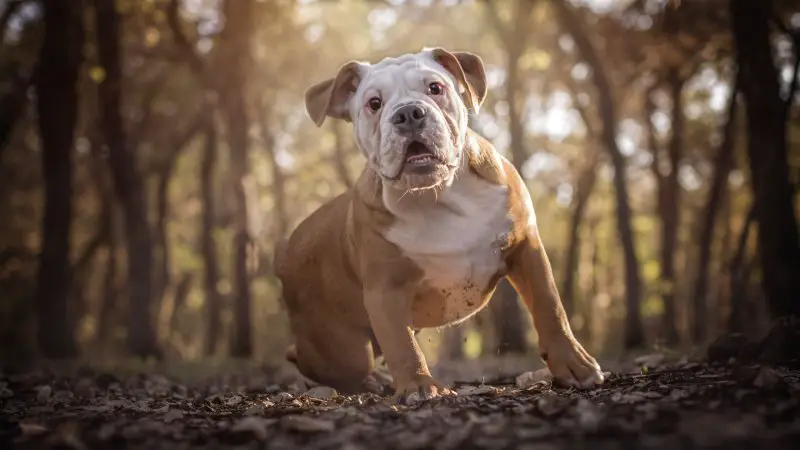
From Adobe Stock
All Mastiff breeds have their huge size and docile temperament in common. The different breeds initially developed in different areas of the world, but they were all raised to protect sheep and their owners’ property. Why, then, did Fredrika Wagner even need to create a “new” version of already wonderful dogs? The table below explains the similarities and differences between the English Mastiff, the Anatolian Mastiff, and their offshoot – the American Mastiff. You can be the judge of whether it makes a difference which breed you bring home, and whether there was even any rationale for creating a new breed.
| American Mastiff | English Mastiff | Anatolian Mastiff | |
| Average Height | 32 inches (78 cm) | Male: 30 inches (76 cm), Female: 27.5 inches (70 cm) | Male: 29 inches (73.5 cm), Female: 27 inches (68.5 cm) |
| Average Weight | Male: 180 pounds (81 kg), Female: 160 pounds (72 kg | Male: 200 pounds (90.5 kg), Female: 150 pounds (68 kg) | Male: 125 pounds (56.5 kg), Female: 110 pounds (50 kg) |
| Barking | Minimal | Minimal | Occasional |
| Drooling | Dry mouth for most of the time. | Slobbers and drools almost constantly. | Average drooler. |
| Trainability | Great intelligence, very easy to train | Average intelligence, easy to train | Low intelligence, acts more on instinct, but easy to train |
| Temperament | Protective of family and property. Affectionate, calm, and playful. | Extremely protective guard dogs. Very loving and affectionate, not very playful. Average need for social interaction. | Fiercely possessive towards animal, property, and family. Playful, but not too affectionate. Antisocial. |
| Good with Families | Good with families and children | Good with families and children | Good with families, and will protect children, but won’t respect them |
| Good with First-time owners | Yes | Yes | No |
| Lifespan | 10 – 12 years | 6 – 12 years | 10 – 13 years |
Summary
While on paper the American Mastiff sounds like a wonderful dog, keep in mind that the Mastiff Club of America and the American Kennel Club does not recognize this very new breed. Some breeders view it with disdain as a “designer dog” created on a whim, and others say it is an insult to the generations of work that went into perfecting the English Mastiff.
Flying W Farms American Mastiffs are 7/8 English Mastiff and 1/8 Anatolian Shepherd, so many professional breeders feel this is more of a mutt than a true breed. One breeder is quoted as saying, “When you take a dog that owes its loyalty to stock and breed it to a dog that owes its loyalty to humans…you are just asking for trouble.”
On the other hand, you might want to take the stand that a dog is a dog, and you trust Mrs. Wagner’s claims that the dogs she breeds are as wonderful as she says they are. Many people raise “mutts” they find in the street or bring home from rescue organizations, and most of those dogs are as lovable and trainable as the most expensive purebreds.
Ultimately, before buying an American Mastiff puppy, you need to decide whether getting a version of a Mastiff that drools less is your top priority, or whether you prefer to place your loyalties with English Mastiff breeders and go with the “original” product.



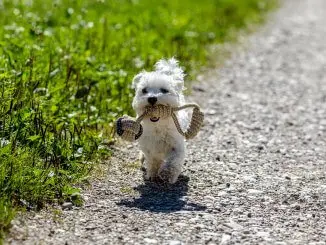

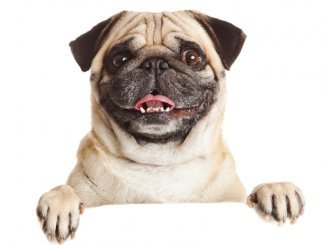
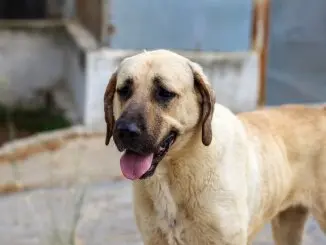
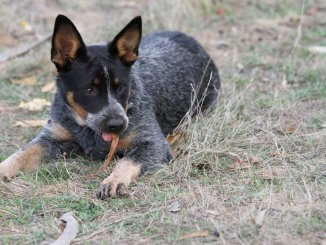
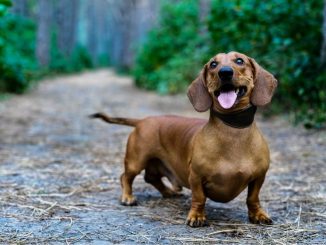
Be the first to comment